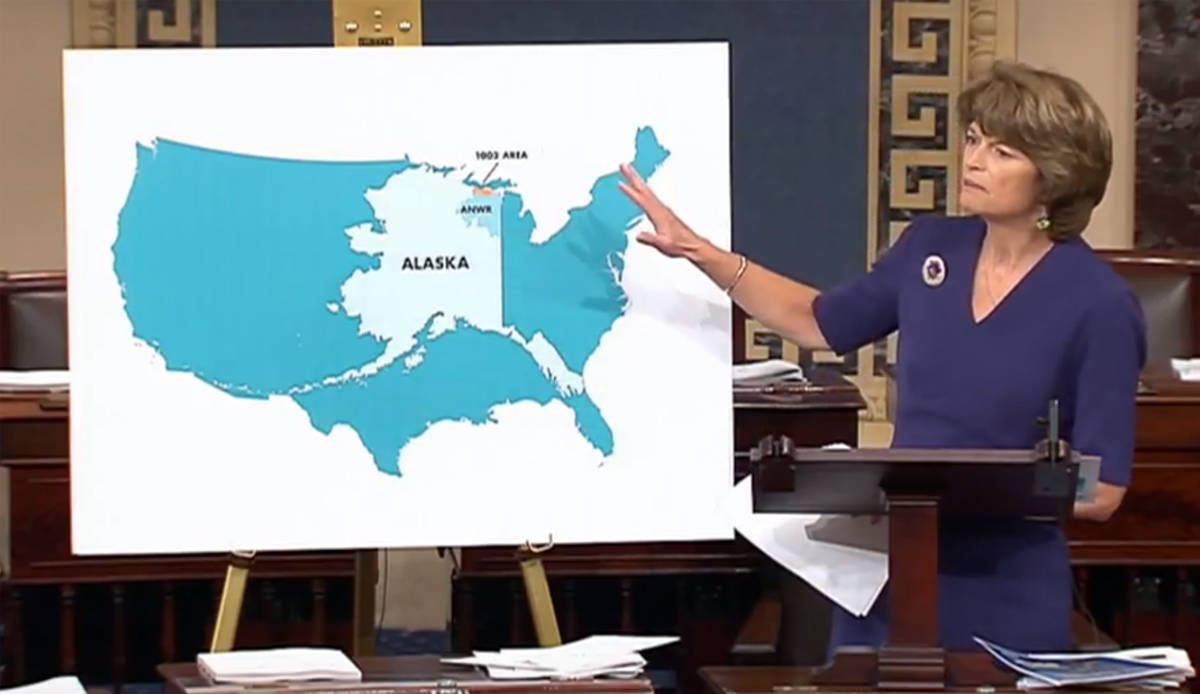The administration of Gov. Bill Walker is asking the Alaska Legislature for permission to spend $10 million on seismic surveying in the coastal plain of the Arctic National Wildlife Refuge.
The seismic survey funding was included as part of a supplemental spending request delivered by the state to the Legislature last week. The request, which totals $26 million in additional costs, is to be folded into ongoing work on the state’s operating and capital budgets for fiscal year 2019.
The Senate Finance Committee heard a presentation Monday on the supplemental request, including the funding. State officials said the money would be used to provide better information about the oil and gas below the surface of the little-surveyed coastal plain. The request comes at a critical time for ANWR, the federal government, and for the state, which is grappling with a $2.5 billion annual deficit.
In December, Congress approved a federal budget that calls for oil and gas lease sales in the coastal plain. Estimates by the Department of Interior to Congress indicate as much as $2.2 billion could be earned from the sales of oil and gas leases there. Half of that money would go to the state.
That amount could be increased if the surveys turned up good results.
“Even a small uptick in participation, we would recapture any of the costs we would put in at this point,” Department of Natural Resources Commissioner Andy Mack said.
Sen. Click Bishop, R-Fairbanks, said that if that’s the case, “I’m looking at $10 million and wondering if that’s enough. … I don’t know if we’re ever going to get back there again.”
“I agree, it’s a one-shot deal here,” Mack responded, saying that the first lease sale in ANWR is likely to be the biggest.
Sen. Peter Micciche, R-Soldotna, pointed out that the state’s plan isn’t a zero-risk scenario. If surveys turn up no oil, or oil in smaller amounts than expected, it could actually decrease demand for leases.
“If you were to lease without that knowledge, sometimes folks will take that risk believing that entire area may have the potential,” he said.
That’s an idea suggested in December by David Houseknecht, the U.S. Geological Survey’s expert on ANWR oil.
“If a 3-D data survey were collected on the ANWR coastal plain and we interpreted that survey and did an assessment, there’s no guarantee that numbers will go up or numbers will go down,” he told attendees at an Anchorage conference, according to Alaska Public Media.
Houseknecht was unavailable to speak on Monday, a federal holiday.
This isn’t the first time Alaska has tried to encourage ANWR drilling with seismic surveys. In 2013, then-Gov. Sean Parnell (with help from then-DNR Commissioner Dan Sullivan) proposed spending $50 million of state money on seismic surveying in ANWR — if the federal government participated as a partner.
The Department of the Interior, then controlled by an appointee of President Barack Obama, declined to do so, and the idea died.
John Hendrix is the former general manager of Apache, an independent oil company, and now works as an oil and gas adviser to Walker.
By phone on Monday, he said seismic surveying isn’t cheap. “In the Arctic, where there’s no roads, it could cost anywhere from $40,000 to $100,000 per square mile.”
At those rates, $10 million isn’t a lot of money. For that reason, the state would likely to buy into a partnership with other groups or smaller oil companies to complete a larger survey.
Pitney, speaking to the Empire after Monday’s hearing, said that larger survey would cost much more than the $10 million the administration is prepared to spend right now.
“My understanding a seismic shoot could be as much as $100 million but maybe as little as $60 (million),” she said.
Pitney said the state has been talking with potential partners but does not yet have any agreements.
Hendrix said the cost is high, but he said it makes sense for the state to take a look, then made an analogy to Southeast Alaska.
“It’s just like a fisherman: Would you find a fisherman out there without a sonar?” he asked. “This is just to get the conversation going.”
• Contact reporter James Brooks at james.k.brooks@juneauempire.com or call 523-2258.

